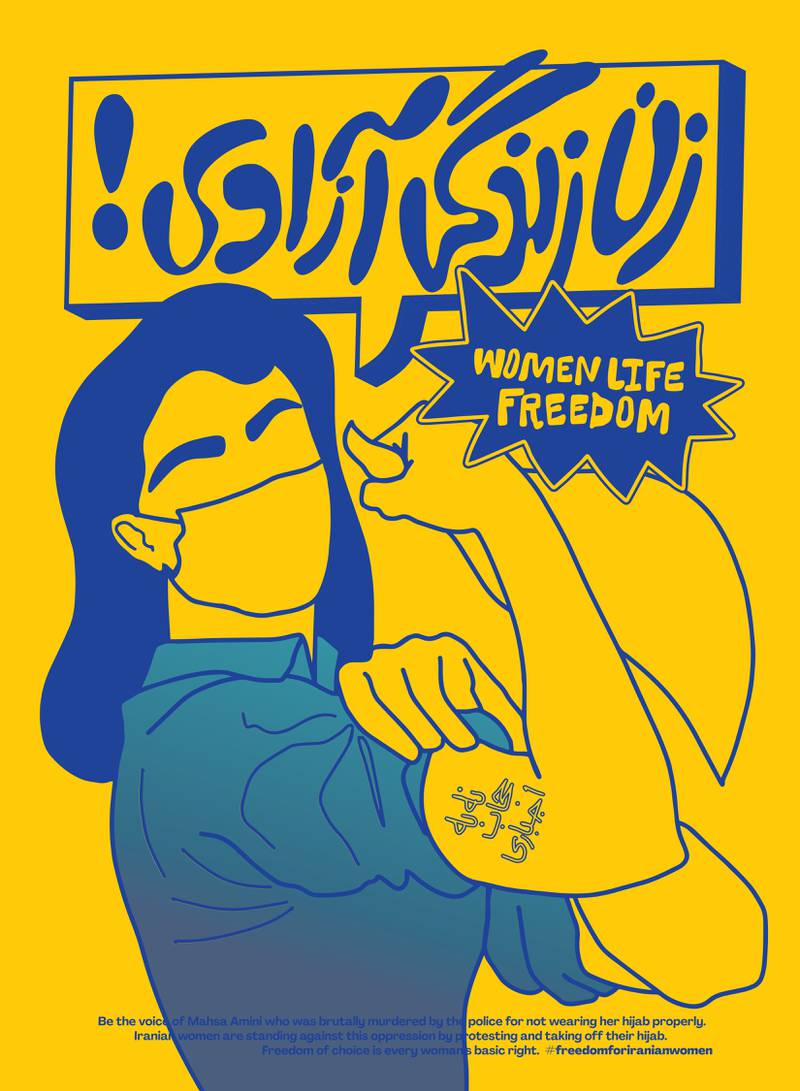Dearest __________,
By now, the world knows the story of Mahsa Amini whose death, following her arrest by the morality police in September 2022, impelled the youth of Iran to take to the streets, catching the entire country off guard. In the subsequent months, much has been written and said – especially outside Iran – about a momentous reckoning taking place in the life of the Islamic Republic.
There is an element of wishful thinking here (as often happens with regard to Iran), but there is also a good deal of truth. Iran is a complicated nation, and people in Tehran joke that every six months this sprawling plateau of so many identities and languages transforms into a different country altogether.
And yet the Islamic Republic endures.
The change that has occurred in recent months is certainly acute. Walking through the capital will reveal that a significant portion of the female population willingly continues to wear the hijab and does so insistently. However, a visible number of women also walk the streets with their heads entirely uncovered. This shift is unprecedented in the life of the Islamic Republic. Women with a variety of hairstyles and colours go about their business boldly, without revealing, at least on the surface, any fear of the security forces occupying the corners of the major thoroughfares.

The Woman, Life, Freedom movement that evolved following Amini’s death, and the appearance of women on the streets of Iran not wearing the hijab, is not unlike a sprint relay, with the baton first passed on 27 December 2017 when Vida Movahed climbed up on a large electrical utility box, took off her white hijab, stuck it on a wooden stick and waved it in the air as a sign of protest.
A lot of women whose basic motto is now ‘a normal life’ do not necessarily know what happened that day on Revolution Avenue five years ago – and how fateful it turned out to be. The same goes for the young men who go out of their way to show solidarity by waving victory signs and smiling widely at the women who refuse to cover their heads. In the busy Haft-e (“Seventh”) Tir Square in the heart of the city, a young woman not wearing the hijab articulates her view, saying: “I want to dress freely. My mother hardly ever removes her hijab, but I’m not my mother. Respect for difference and diversity is what makes life beautiful.”
And yet, on the other side of the equation, the Islamic Republic has considered the hijab a red line, and an ideological foundation, for the last 40 years. Many within the regime consider losing this fight synonymous with surrendering, and surrender has never been part of the Islamic Republic’s playbook. But what to do when so many young women in towns large and small across Iran are rejecting the hijab?
One strategic option – the one that the regime seems to have adopted for the time being – is to do nothing. This has led to scenes that would have been unimaginable in this country half a year ago: young women (but not only the young) passing directly in front of security police, who make no effort to arrest them. And while in Friday prayers, and other platforms connected to conservative factions, the cry for a harsh crackdown continues unabated, the highest echelons of power appear to be tacitly endorsing the maxim “live and let live”.
Young women and men of school and university age are the flagbearers of the movement and paid a heavy toll during the earlier street confrontations with the security forces. More recently, prison terms and a handful of summary executions (not to mention the winter chill) have brought a hiatus, for now, to the streets of Tehran and other cities.




While the streets are quiet, the youth are still busy in the virtual world, and Iran’s Generation Z is as internet savvy as youths anywhere. The regime’s filtering and control of the virtual world may be able to slow internet access, but it cannot put a stop to it altogether. A teacher at a Tehran girls’ school says: “My students stand up in the middle of class, shouting that they don’t want to follow the lesson plan; they want to talk about the problems the country faces. These kids are angry.”
“Taking off my hijab is the least I can do,’ says a young woman, who has not worn a headscarf for the past three months. She continues: “The government must understand that even guns aren’t enough to force women to cover their heads any more. If one day I have to go back to wearing the hijab, I’ll have betrayed Mahsa and all the others who’ve already died for us. Every day, I spend hours on YouTube and other websites. I see what’s going on outside Iran. Why should there be such a divide between us and the rest of the world? Why does the government have to control our private lives? Why are Iranians so poor when our country has so much natural wealth?”
It’s a little past noon on Revolution Avenue, a weekday. I decide to spend half an hour inside the France Pastry Shop, one of Tehran’s oldest cafes, which is more than enough time to get a sense of the women who pass by the celebrated utility box. In the 30-minute interval, 61 women pass by. Thirty-two of them have their heads completely uncovered. Sixteen wear their headcovers reluctantly, the hair easily showing. Thirteen either wear a full chador or the maqnaa (one-piece head covering) often worn by women in government offices and schools.
Inside the cafe, the numbers are similarly telling – several university-age women wearing no hijab are busy ordering hot drinks and pastries. Leaning on the cafe’s window, a young couple stare out at the pavement. The woman, with no headscarf, points to the platform and says, “You know, that’s exactly where Vida took her hijab off for the first time ever and waved it on a pole.” As if on cue, at that moment a big black van, accompanied by a force of 20 motorcycles belonging to the special anti-riot police, passes the spot on Revolution Avenue.
Nowadays, Tehran’s streets are relatively calm – despite the exaggerated and often out-of-context claims of imminent revolution that opposition television channels tiresomely broadcast into the country. As Generation Z will tell you, Woman, Life, Freedom is on pause right now. They liken the movement to an active volcano that erupts now and then, but whose eruptions are far smaller than the major one which is expected to happen some day. One of them says, “We’re the embers under the smouldering ash; any day, we could catch on fire. The regime and its shock troops need to get it into their heads once and for all that Iran will never go back to how it used to be.”
Interestingly, the regime and its young people may have the same objective in mind: not going back to what once was. Why else would the sight of women not wearing the hijab have become so commonplace here? One could argue that, rather than a volcano awaiting a “great eruption”, the Islamic Republic – after more than four decades of practice – has not necessarily perfected, but rather learnt the art of allowing for seismic activity (sometimes even tectonic in scale) in order to pre-empt something of far larger magnitude.
This story is still unfolding.
Yours always,
A
Translated from Persian
This is an edited extract from Woman Life Freedom: Voices and Art from the Women’s Protests in Iran (Saqi, £14.99), edited by Malu Halasa, which is available now.
Updated: September 14, 2023, 12:31 PM
This post was originally published on this site be sure to check out more of their content.






